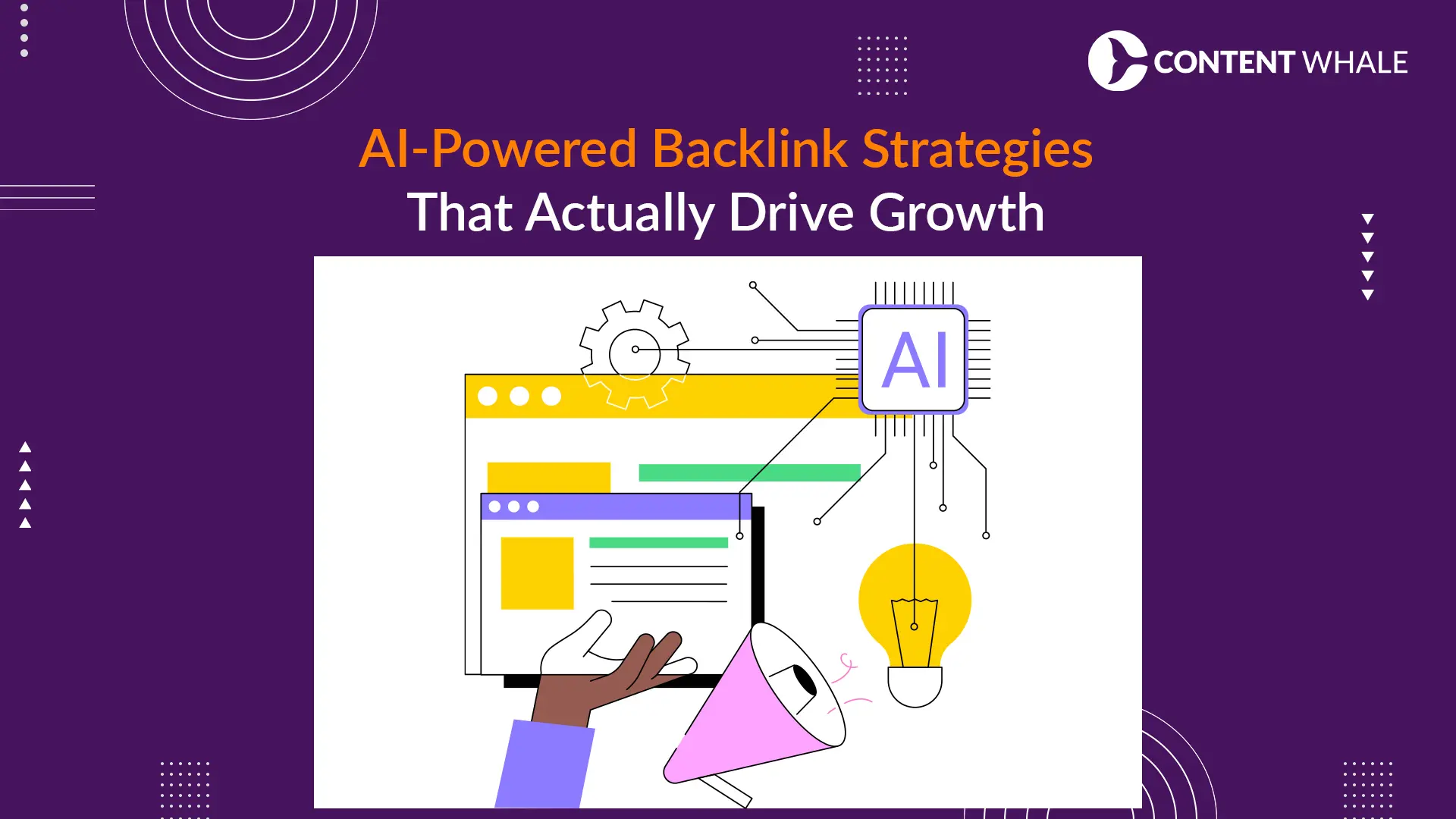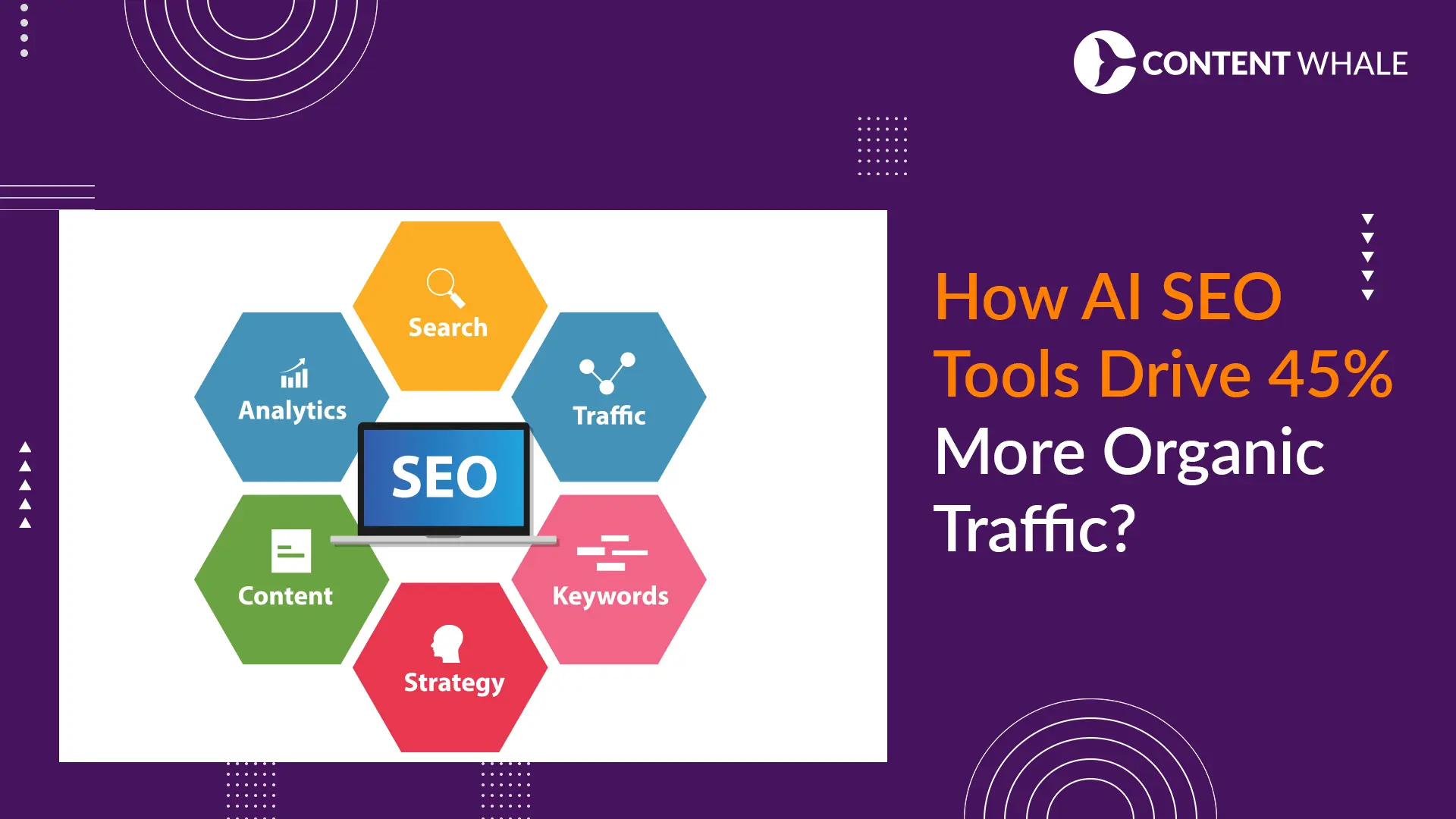Keyword search isn’t just about matching exact words anymore. It’s about meaning. Google’s AI Overviews now reach over 2 billion monthly users across 200+ countries and 40 languages, showing how fast entity signals are reshaping what shows up first in search results (Source). When you use Entity SEO, you help search engines understand exactly who or what your content is about.Instead of fighting for single keywords, you become the recognized “thing” behind them. And with Entities based SEO, you build relationships between topics, authors, products, and brands, so Google can see more than just a page; it sees context.
Here’s something surprising: in 2025, about 18% of Google searches show an AI-generated overview; in the U.S., 58% of adults reported encountering at least one such search (Source). That means traditional SERP visibility is shifting. If your site doesn’t clarify its entities, you risk being ignored, even if your content is solid.
Let’s explore what entity SEO really looks like today, and how entities based SEO isn’t just theory, it’s already shaping what ranks.
Why Entity SEO and Entities Based SEO beat keyword?
Search engines lean heavily on meaning now. Entity SEO provides that meaning. You’re not just optimizing for strings; you’re optimizing for identifiable “things”, people, products, concepts. That leads to broader match across queries, fewer duplicates, and better chances to show up in AI Overviews and Knowledge Panels.
Things, not strings — how the Knowledge Graph changed search
Knowledge Graph gives Google structured data about entities—attributes, relationships, unique identifiers. With Entity SEO, you speak this language: clarifying what your page is about, using canonical names, linking to related entities. That cuts down on confusion from synonyms or ambiguous names and helps your pages compete on meaning, not just exact phrases.
AI Overviews: Entity Visibility at the Top of SERPs
AI Overviews are taking more and more space on search result pages, 42% of desktop views in some reports, 48% on mobile (Source). That pushes traditional organic results further down. Pages using Entities based SEO with identifiers, schema, and clear relationships are more likely to get cited or surfaced by Overviews. When AI delivers summaries, content that clarifies who/what is much more likely to be trusted and shown.
Building your model: Entities based SEO in practice
Start with mapping. It’s hard to optimize meaningfully if you don’t know which entities you own or are connected to. Do an audit: names, products, topics. Make sure each entity has one canonical page, its “home” with consistent identifiers.
Run an entity inventory & fix ambiguities
List all names, product variants, authors, topics. Find if there are duplicates, different spellings, or conflicting names. Choose one standard, canonical version. Use schema (Organization, Product, Person) with consistent identifiers (e.g. sameAs, external IDs). That avoids splitting your signals across many similar entities.
Map relationships to define topical boundaries
Draw connections between your entities: brand → products → topics → use cases. Use internal links to signal these relationships. This builds topical authority, helps search engines understand which pages support which larger hub pages. When search engines realize your structure, your site competes better for queries that aren’t exact matches.
Use Wikidata IDs, sameAs, and identifiers
If possible, link to external, stable identifiers like Wikidata, or other authoritative profiles. Use sameAs schema properties. These signals help disambiguate entities with similar names, and reinforce the identity of each entity you want to own in search.
Schema Patterns that Move the Needle for Entity SEO
Schema is the markup that makes entities machine-readable. Without it, you’re relying on guesses. With the right schema types and properties, you tell Google exactly what “thing” you are, which helps with rich results, Knowledge Panels, and AI Overviews visibility.
Organization, Website, Breadcrumb, About/Person
Use Organization schema on your brand’s entity home: name, logo, any sameAs links to social profiles and external IDs. Website schema for the whole site, Breadcrumb schema so Google sees your structure. For authors, Person schema adds trust and helps tie name recognition to content, particularly important if multiple authors write about related entities.
Product/Service, Article, FAQ, HowTo
For product pages, use Product schema (with identifiers). For content pieces, use Article schema. When users ask questions, FAQ or HowTo schema helps. These markup types often lead to eligibility for special SERP features. That means entities based SEO not only helps your pages be understood, it helps them look different in search results.
Review your required + recommended properties
Always include core fields like @type, name, description, identifier, and sameAs where relevant. Keep naming consistent. If you have multiple pages touching the same entity, make sure those properties match across pages so search can group them together.
JSON-LD first; validate with Rich Results Test
Google prefers JSON-LD format. Always test your schema using Google’s Rich Results Test (or equivalent) to catch errors. A small typo or missing property could prevent a page from being eligible for rich results or being cited in an AI Overview.
Measurement note
Watch Search Console: how many pages are receiving rich results; how many impressions in those results vs non-marked pages; CTR differences. These give you concrete feedback on whether your Entity SEO work is paying off.
Content production with Entities based SEO

Creating content with entities in mind changes how you plan, write, and structure. You shift from “keywords per page” to “what real things does this page talk about, and how are they related.” That improves both user experience and search visibility.
Entity-first briefs
Before writing, decide the main entity the page will serve. List related entities you must mention or link to. Outline user questions around those entities. That helps ensure you cover what Google expects when mapping meaning. Use those in headings, content, metadata.
Media & metadata
Image filenames, alt text, captions, use them to reinforce entity names. If you have author profile photos, bios, use metadata that connects them to entities. Consistency across visuals and metadata supports entity recognition.
Internal Linking & Structure for Entity SEO

Strong content without structure may still lose. Internal linking and site architecture are how you tell Google what matters most.
Hubs and clusters built on relationships
Create pillar content for major entities; connect related content as satellites. Use anchor texts that include the entity names. This helps spread relevance and shows content depth related to each entity.
Breadcrumbs + About/Contact consistency
Ensure About pages and Contact pages clearly mention your brand entity, name, identity. Breadcrumbs that reflect category → subcategory → entity support clarity. Template consistency matters: if your entity name appears differently in footers vs headers vs schema, it may confuse entity matching.
Measurement Framework: Prove Entity Impact
You won’t see results overnight, but you can measure meaningful signs that your Entity SEO is working.
Leading indicators
Knowledge panels appearing for your entities; rich result impressions; growth in “Entity Queries” (queries that clearly refer to things, not just keywords). Monitor Search Console and tools that show query intent.
Lagging indicators
Click-through rate, conversions, bounce rate, and ranking stability across query variants. If your entity-based content holds up better after algorithm changes, that’s a signal you’ve built something resilient.
Analyst workflow
Export Search Console data monthly. Tag content based on entity updates you made. Compare performance of pages before vs after markup or internal linking changes. Track how often your entity pages are cited or linked internally.
Risk & Quality checks for Entity SEO

Even the best entity strategy can backfire if done poorly. Avoid common pitfalls that may affect your growth.
Avoid incorrect markup
Don’t mark up content that isn’t visible to users. Don’t fake reviews or ratings. Only use schema for elements users see. Mistakes here can lead to eligibility loss or penalties.
Align with people-first content guidelines
Ensure your content delivers value. Be transparent about authorship. Avoid over-optimization that clutters content with entity mentions without real purpose. Google rewards clarity and usefulness.
How Content Whale Can Help
We help brands build their entity map, implement schema across site templates, write content briefs that center on entities, and set up measurement dashboards. Whether you have dozens of entity pages or hundreds, we make sure your Entity based SEO work scales with business impact.
Conclusion
If you want search visibility that lasts, not just spikes, then entity SEO must be part of your strategy. With business pages, product pages, content, all clearly tied to entities and with schema, consistent structure, and internal linking. It’s possible to own more of the queries Google shows.
Get in touch with Content Whale today to audit your entities, fix schema, and map your relationships to shift from chasing keywords to owning meaning.
FAQs
Q1: What is an Entity in SEO?
An entity is a unique concept, thing, or person recognized by search engines, one that has attributes and relationships. Entity SEO means optimizing your content so search engines know precisely which entity it is.
Q2: How is Entity SEO different from Keyword Optimization?
Keyword optimization tries to match text strings; Entity SEO aligns content to meaning and identity. It captures variations, related queries, and ensures content ties back to the correct entity.
Q3: Do I Need Schema for Entities Based SEO to Work?
Schema isn’t strictly required, but it makes a big difference. It helps search engines see exactly what entity you are, what attributes you have, and links you to external identifiers. Without schema, you’re leaving visibility on the table.
Q4: How do I find my Brand’s “Entity Home”?
Look if a knowledge panel exists for your brand. If not, build a strong canonical page (often the About page), include schema (Organization, Person, or Organization), use sameAs links, and consistently reference entity name across site and metadata.
Q5: How do AI Overviews use entities?
AI Overviews generate summaries when queries show entity-like intent. They favor content that clearly defines the entity (who/what it is), uses schema, identifiers, and relationships. Content that does this often surfaces in the summary or cited section.
Q6: How Do I Measure Progress?
Track knowledge panel appearances, rich result impressions, CTR for entity-rich pages versus others, plus ranking for variant queries. Use Search Console, tagging, and compare before/after changes to see real impact.





